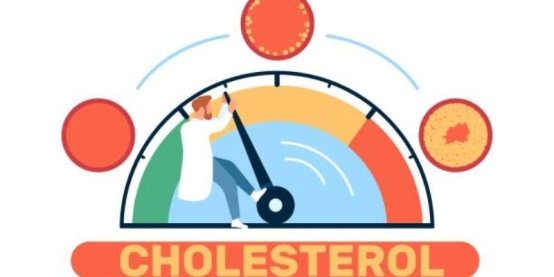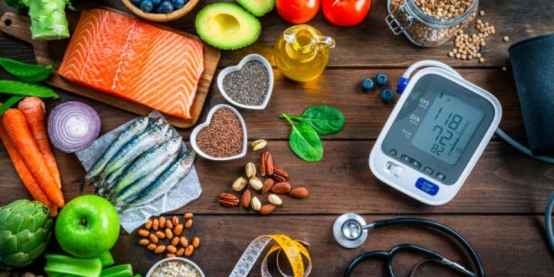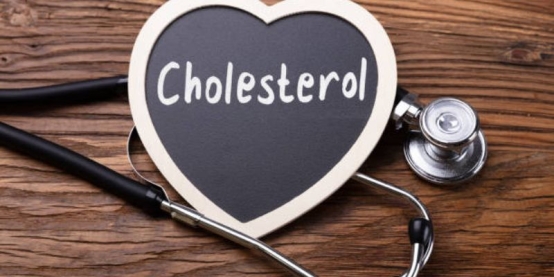Proven Ways to Lower Cholesterol Without Drugs
A friendly reminder: cholesterol is not all bad. There are two main types — LDL (low-density lipoprotein), often called “bad” cholesterol, and HDL (high-density lipoprotein), the “good” cholesterol. When LDL builds up, it can clog arteries and increase the risk of heart disease and stroke; meanwhile, HDL helps carry excess cholesterol away from arteries to the liver for removal.
Controlling cholesterol is critical for cardiovascular health. But prescription drugs are not the only path — many people can meaningfully reduce cholesterol through targeted lifestyle changes rooted in diet, movement, and habits.
Understand the Root Cause of High Cholesterol
Cholesterol buildup in the bloodstream often results from a combination of factors: consuming too many saturated fats or trans fats, lack of physical activity, excess body weight, chronic stress, and in some cases genetics or family history (familial hypercholesterolemia).

One common misconception is confusing dietary cholesterol (found in animal foods) with blood cholesterol — your liver already produces most of the cholesterol in your body, so dietary cholesterol often has less impact than saturated and trans fats. With consistent changes in eating habits and daily routines, many people can reverse or mitigate elevated cholesterol naturally rather than simply managing it.
Eat More Heart-Healthy Fats Instead of Saturated Fats
One of the most powerful dietary shifts is replacing saturated fats (found in butter, full-fat dairy, fatty red meats, and palm oil) with unsaturated fats. Sources like extra virgin olive oil, avocados, nuts (such as almonds, walnuts), and seeds (chia, flax) supply monounsaturated and polyunsaturated fats that help raise HDL and lower LDL.
In particular, omega-3 fatty acids — found in fatty fish like salmon, mackerel, sardines, and in flaxseed or chia — are known for improving lipid profiles and reducing triglycerides. The American Heart Association recommends two servings of fatty fish per week. These healthy fats should replace, not add, calories (so reduce intake of saturated fat sources accordingly).
Increase Soluble Fiber Intake
Soluble fiber binds with cholesterol particles in the digestive tract and helps escort them out of the body before absorption.
Key foods rich in soluble fiber include oats, beans, lentils, apples, pears, and psyllium husk. For example, starting your morning with a bowl of oatmeal (rather than processed cereal) can deliver 3 to 4 grams of soluble fiber right away. Over the long term, aiming for 5–10 grams of soluble fiber daily can lead to measurable LDL reductions.
Practical idea: swap in a bean-based soup instead of meat, snack on apple slices, stir psyllium into smoothies, or use oat bran in baking to boost fiber without feeling like a sacrifice.
Add Cholesterol-Lowering Foods Backed by Science
Beyond fiber and healthy fats, certain foods have specific evidence showing cholesterol benefit:
Plant sterols and stanols: These naturally occurring substances reduce intestinal cholesterol absorption. Intakes around 2 grams per day are associated with 8−10 % LDL lowering when combined with a low-saturated fat diet.
Soy protein: Replacing some animal protein with soy (tofu, tempeh, soy milk) offers a modest 5–6 % LDL drop in many studies.
Garlic: Small but consistent evidence suggests garlic compounds can slightly reduce LDL and inhibit cholesterol synthesis in the liver (though results vary by dose and form).

Green tea: Rich in catechins and antioxidants, green tea may slow LDL oxidation and modestly improve overall cholesterol balance.
Integrating these into meals — for example, fortified spreads, tofu stir-fries, garlic-ginger dressings, or a cup of green tea daily — can support a cholesterol-lowering diet.
Limit Refined Carbs, Added Sugar, and Trans Fats
While cutting saturated fats is important, it’s equally vital to watch refined carbohydrates and added sugar. These can raise triglycerides and lower HDL — pushing the overall lipid balance in the wrong direction. Trans fats, in particular (often found in industrial baked goods, margarine, and processed snacks), are especially harmful and should be avoided entirely.
Swap sugary sodas or desserts for fresh fruit, replace white bread with whole grain or sprouted varieties, and check labels — choose products labeled “zero trans fats” or free of “hydrogenated oils.”
Maintain a Healthy Weight and Exercise Regularly
Body weight strongly influences cholesterol levels. Dropping just 5–10 % of body weight can lead to meaningful declines in LDL and total cholesterol.
Regular physical activity also helps — aim for at least 30 minutes of moderate–intensity exercise on most days (5 days a week). Good choices include brisk walking, cycling, swimming, or dancing.
Exercise helps improve HDL, lower LDL, and improves circulation and heart function. Over time, combining weight loss and activity often yields more consistent cholesterol improvements than diet alone.
Manage Stress and Sleep Better
Chronic stress and poor sleep are hidden drivers of cholesterol imbalance. Elevated cortisol (the stress hormone) can prompt your body to raise cholesterol production, while inadequate sleep disrupts metabolism and fat regulation.
Strategies to manage stress include meditation, deep breathing or box breathing exercises, progressive muscle relaxation, or even short mindful breaks during the day. Aim for 7–8 hours of quality sleep nightly, maintain consistent sleep schedules, and avoid screens or stimulating activities close to bedtime.
Quit Smoking and Limit Alcohol
Smoking compromises cardiovascular health in many ways, and one is via lipid metabolism: it reduces HDL (“good”) cholesterol and damages arterial walls, accelerating plaque buildup. Quitting smoking often leads to improvements in HDL over time and lowers cardiovascular risk.
As for alcohol, moderate consumption (for example, one standard drink per day for women, two for men in some guidelines) might raise HDL slightly, but excess drinking increases triglycerides and other risks. The key is moderation — if alcohol is used, it should be limited.

Track Your Progress and Stay Consistent
Lifestyle changes take time — but improvements can begin within weeks. It’s wise to check cholesterol levels every 3 to 6 months to see how changes are influencing LDL, HDL, and triglycerides.
Many people notice meaningful shifts (5–15 % LDL reductions) within 6–12 weeks of sustained effort. What matters most is consistency — small, sustainable habits (rather than intense short-term fixes) build up over months and years. Keep a food and activity log, revisit and adjust your plan, and reinforce that lasting change is better than a quick fix.
Empowered Heart Health Through Healthy Habits
Lowering cholesterol without drugs isn’t a pipe dream — it’s a reachable goal for many who commit to diet, movement, and mindful living. By combining heart-healthy fats, soluble fiber, plant sterols, regular exercise, stress and sleep management, and avoiding harmful habits, major wins are possible. The journey is gradual, but the benefits compound. Your heart health is truly in your hands — with the right habits, prescription isn’t the only route.